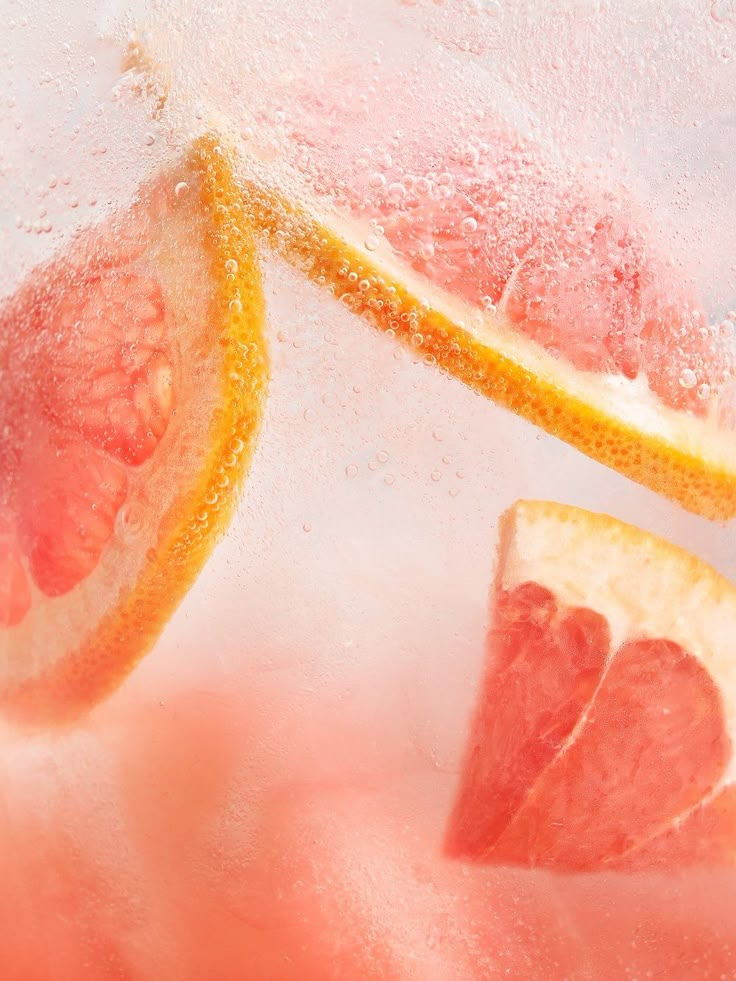Grapefruit in Perfumery: Zests of Emotion

Often overshadowed by its citrus cousins in perfumery, grapefruit is nevertheless a star ingredient capable of transforming an olfactory composition. From its exotic botanical origins to its essential role in contemporary creations, this raw material embodies freshness, vitality, and refinement. Let’s delve into its history, cultivation and extraction techniques, olfactory and emotional virtues, and discover how L’Atelier Parfum elevates this exceptional essence.
Botanical Origin and History of Grapefruit
From the Caribbean to Grasse: a global journey
Botanically, grapefruit (Citrus × paradisi) is a natural hybrid resulting from the cross between the Indonesian pomelo (Citrus maxima) and the sweet orange (Citrus sinensis), likely occurring in Barbados in the 17th century. Although often confused with pomelo (the large, pale-fleshed Asian fruit), true grapefruit is the round, juicy fruit we know today.
Its history begins in the Caribbean, where it was colloquially called the "forbidden fruit" or "paradise apple." The name “grapefruit” comes from the fruit’s tendency to grow in grape-like clusters. In the 18th century, Captain Shaddock, a British seafarer, introduced this citrus to the West Indies, which led to its cultivation in the United States and Florida, then South America and India. Interest grew over the centuries: in 1933, Florida produced its first batches of grapefruit essential oil. From then on, the fruit became a star ingredient in olfactory compositions, appreciated for its explosive freshness and multifaceted aroma.
Growing Grapefruit: Tradition Meets Innovation
From tree to fruit: requirements and expertise
The grapefruit tree (Citrus × paradisi) is a vigorous tree, today grown primarily in Florida, Argentina, Mexico, South Africa, and Israel. It prefers subtropical climates, well-drained sandy or sandy-loam soils, and a slightly acidic pH (6-7).
Grapefruit cultivation requires:
Harvest usually takes place from March to July in the southern hemisphere, and from November to May in the northern hemisphere. The fruit is carefully picked at optimal ripeness to preserve its aromatic strength.
A Driver of Sustainable Development
The grapefruit sector, increasingly aware of environmental concerns, adopts more and more responsible practices: optimized irrigation, organic agriculture, biodiversity initiatives, traceable and fair production cycles—such as the partnership between Robertet and its local producers.
Transformation into Perfume Oil: The Art of the Zest
Grapefruit essential oil is mainly obtained by cold-pressing the fruit's zest (pericarp). This gentle mechanical process, free of solvents, preserves the integrity of aromatic molecules.
Key extraction steps include:
Grapefruit oil retains the vibrancy, natural acidity, and distinctive bitter tang that are signatures of modern fragrances.
Grapefruit’s Olfactory Profile: Brilliant Freshness & Subtle Nuance
Grapefruit makes an impression on first breath with its zesty, sparkling, lively, and delicately bitter aroma. It is a quintessential top note, structuring the opening of so-called "hesperidic" compositions.
Olfactory characteristics:
Depending on the variety, fruit color influences the aroma: white grapefruit is drier and sharper, while pink or red fruits suggest more roundness and indulgence.
Grapefruit zest shines particularly in:
Grapefruit & Emotions: A Stimulating Energy
Grapefruit essential oil is renowned for its energizing properties and positive impact on mood. In aromachology, its scent:
Many studies also show that grapefruit supports focus, motivation, and creates an atmosphere of confidence and dynamism—ideal for work or creative settings.
Robertet and Grapefruit Cultivation: Nature, Innovation, and Responsibility
Expertise from seed to bottle
As a global leader in natural raw materials, the Robertet house ("Seed to Scent") oversees every step: from variety selection to eco-friendly processing, quality control, and creative olfactive formulation.
Robertet ’s actions:
“Robertet is deeply committed to sustainable perfumery, respectful of the environment, producers, and biodiversity.”
Iconic Grapefruit Perfumes
Thanks to its unmatched freshness, grapefruit is key to many best-selling fragrances for both women and men. Its sparkling accords delight in summer creations as well as in signature scents.
A few iconic perfumes:
L’Atelier Parfum & Grapefruit: Signature of a Green Euphoria
At L’Atelier Parfum, grapefruit provides a distinctive touch to creations, embodying sparkling, lively, and truly modern freshness.
Spotlight: Verte Euphorie Eau de Parfum
Verte Euphorie offers a cocktail of stimulating citrus where grapefruit sets a vibrant, tart opening—a fragrance capturing the charm of spontaneity, youthful vitality, and a carefree spirit. Its vegetal nuance, enhanced by petitgrain, blends into a green and musky signature, a tender, lingering trail on the skin.
This olfactory approach exemplifies the house’s philosophy: high-quality natural ingredients, vegan formulas, respect for authenticity and emotion in creation.
Conclusion
Grapefruit embodies modernity in Western perfumery: it brings freshness, immediacy, joie de vivre, and refinement. Its use illustrates a sector committed to blending traditional know-how with innovative R&D, driven by players like Robertet and creative houses such as L’Atelier Parfum.
Versatile, grapefruit stands as the keystone of top notes and the unforgettable trail of many cult fragrances. For both the enthusiast and the novice, it remains the star citrus—at once accessible, bold, and perfectly in tune with the times.
Sources:
Fragrantica
Elle
Wikiparfum – Grapefruit
Bloom to Perfume
ScienceDirect
Botanical Origin and History of Grapefruit
From the Caribbean to Grasse: a global journey
Botanically, grapefruit (Citrus × paradisi) is a natural hybrid resulting from the cross between the Indonesian pomelo (Citrus maxima) and the sweet orange (Citrus sinensis), likely occurring in Barbados in the 17th century. Although often confused with pomelo (the large, pale-fleshed Asian fruit), true grapefruit is the round, juicy fruit we know today.
Its history begins in the Caribbean, where it was colloquially called the "forbidden fruit" or "paradise apple." The name “grapefruit” comes from the fruit’s tendency to grow in grape-like clusters. In the 18th century, Captain Shaddock, a British seafarer, introduced this citrus to the West Indies, which led to its cultivation in the United States and Florida, then South America and India. Interest grew over the centuries: in 1933, Florida produced its first batches of grapefruit essential oil. From then on, the fruit became a star ingredient in olfactory compositions, appreciated for its explosive freshness and multifaceted aroma.
Growing Grapefruit: Tradition Meets Innovation
From tree to fruit: requirements and expertise
The grapefruit tree (Citrus × paradisi) is a vigorous tree, today grown primarily in Florida, Argentina, Mexico, South Africa, and Israel. It prefers subtropical climates, well-drained sandy or sandy-loam soils, and a slightly acidic pH (6-7).
Grapefruit cultivation requires:
- Precise irrigation: frequent and generous watering while avoiding water stress or excess, with a current preference for drip irrigation to optimize water and nutrients.
- Tailored fertilization: regular supply of organic matter and fertilizers.
- Plant health protection: fighting against root diseases and pests, while keeping pruning interventions limited to dead wood removal.
Harvest usually takes place from March to July in the southern hemisphere, and from November to May in the northern hemisphere. The fruit is carefully picked at optimal ripeness to preserve its aromatic strength.
A Driver of Sustainable Development
The grapefruit sector, increasingly aware of environmental concerns, adopts more and more responsible practices: optimized irrigation, organic agriculture, biodiversity initiatives, traceable and fair production cycles—such as the partnership between Robertet and its local producers.
Transformation into Perfume Oil: The Art of the Zest
Grapefruit essential oil is mainly obtained by cold-pressing the fruit's zest (pericarp). This gentle mechanical process, free of solvents, preserves the integrity of aromatic molecules.
Key extraction steps include:
- Harvesting and sorting ripe fruit
- Zesting: separating the peel from the pulp
- Cold pressing: mechanical extraction of the zest to collect essential oil, followed by decanting and filtration.
- Possible fractional distillation: used to reduce furocoumarin content (photosensitizing molecules), particularly for high-end cosmetic and perfume applications.
Grapefruit oil retains the vibrancy, natural acidity, and distinctive bitter tang that are signatures of modern fragrances.
Grapefruit’s Olfactory Profile: Brilliant Freshness & Subtle Nuance
Grapefruit makes an impression on first breath with its zesty, sparkling, lively, and delicately bitter aroma. It is a quintessential top note, structuring the opening of so-called "hesperidic" compositions.
Olfactory characteristics:
- Top: zesty explosion, tart and fresh, blending refined bitterness with sweet softness.
- Heart: aromatic nuances, slightly woody and vegetal, reminiscent of crushed leaves and sometimes a hint of green earthiness, especially from pink or red cultivars.
- Base: a slight musky or green nuance, residual but persistent.
Depending on the variety, fruit color influences the aroma: white grapefruit is drier and sharper, while pink or red fruits suggest more roundness and indulgence.
Grapefruit zest shines particularly in:
- Hesperidic perfumes (citrus)
- Fresh floral compositions
- Green, modern aromatic accords
Grapefruit & Emotions: A Stimulating Energy
Grapefruit essential oil is renowned for its energizing properties and positive impact on mood. In aromachology, its scent:
- Stimulates joy, optimism, and creativity
- Awakens the senses (a sparkling "start")
- Provides an immediate sense of well-being, chases away gloom, reduces stress and mental fatigue
- Serves as a natural antidepressant thanks to molecules like limonene, which act on the neurosensory level
Many studies also show that grapefruit supports focus, motivation, and creates an atmosphere of confidence and dynamism—ideal for work or creative settings.
Robertet and Grapefruit Cultivation: Nature, Innovation, and Responsibility
Expertise from seed to bottle
As a global leader in natural raw materials, the Robertet house ("Seed to Scent") oversees every step: from variety selection to eco-friendly processing, quality control, and creative olfactive formulation.
Robertet ’s actions:
- Selection of grapefruit zests from the best growing regions, mainly Argentina and Mexico
- Extraction by cold pressing to preserve aroma and limit environmental impact
- Development of oils low in furocoumarins to ensure cosmetic safety while retaining authenticity and naturalness
- Establishment of traceable supply chains in line with social and sustainability standards: eco-friendly agricultural techniques, support for local economies, crop monitoring, certifications
- Ongoing research into innovative extraction methods (supercritical CO₂, green chemistry) and upcycling to add value to fruit co-products
“Robertet is deeply committed to sustainable perfumery, respectful of the environment, producers, and biodiversity.”
Iconic Grapefruit Perfumes
Thanks to its unmatched freshness, grapefruit is key to many best-selling fragrances for both women and men. Its sparkling accords delight in summer creations as well as in signature scents.
A few iconic perfumes:
- Jo Malone London Grapefruit : a benchmark for pure, elegant freshness
- Dolce & Gabbana Light Blue: an airy, sunlit explosion of grapefruit, instantly recognizable
- Terre d’Hermès: sharp and woody grapefruit, a modern signature of refined masculinity
- Acqua di Gio (Giorgio Armani): an aquatic, marine note enlivened by a dynamic zest
- Pamplemousse Rhubarbe, L'Occitane: a cocktail of intensely fresh, invigorating citrus
- Summer of 84, Kerosene: citrus aromatic, unisex
L’Atelier Parfum & Grapefruit: Signature of a Green Euphoria
At L’Atelier Parfum, grapefruit provides a distinctive touch to creations, embodying sparkling, lively, and truly modern freshness.
Spotlight: Verte Euphorie Eau de Parfum
- Top notes: Grapefruit, blood orange, petitgrain
- Heart: Gentian, carrot
- Base: White musk, cedar
Verte Euphorie offers a cocktail of stimulating citrus where grapefruit sets a vibrant, tart opening—a fragrance capturing the charm of spontaneity, youthful vitality, and a carefree spirit. Its vegetal nuance, enhanced by petitgrain, blends into a green and musky signature, a tender, lingering trail on the skin.
This olfactory approach exemplifies the house’s philosophy: high-quality natural ingredients, vegan formulas, respect for authenticity and emotion in creation.
Conclusion
Grapefruit embodies modernity in Western perfumery: it brings freshness, immediacy, joie de vivre, and refinement. Its use illustrates a sector committed to blending traditional know-how with innovative R&D, driven by players like Robertet and creative houses such as L’Atelier Parfum.
Versatile, grapefruit stands as the keystone of top notes and the unforgettable trail of many cult fragrances. For both the enthusiast and the novice, it remains the star citrus—at once accessible, bold, and perfectly in tune with the times.
Sources:
Fragrantica
Elle
Wikiparfum – Grapefruit
Bloom to Perfume
ScienceDirect





